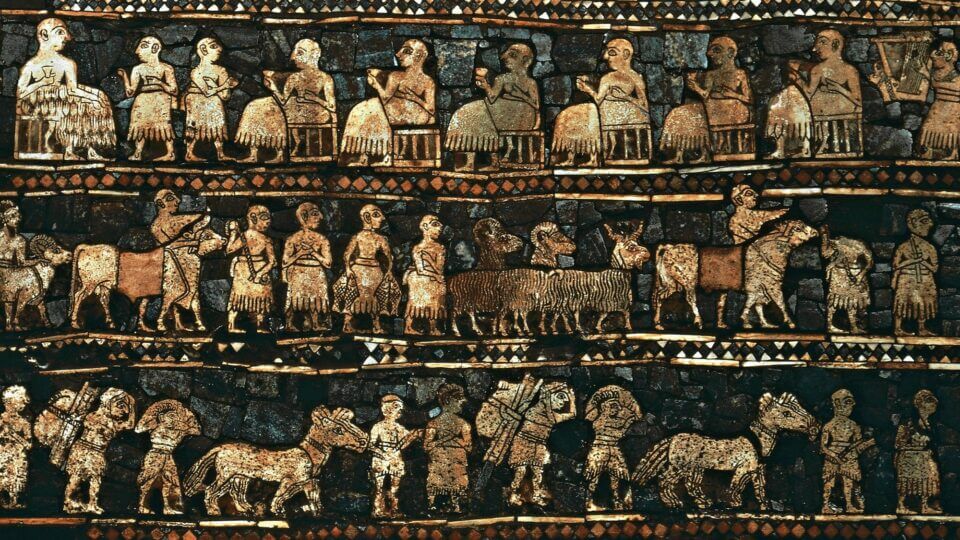
“Prominent proposals by left-wing parties such as democratizing the workplace or introducing universal public healthcare (in the United States), they argue, are best framed as positions that further the cause of freedom.”
In a lengthy essay entitled “Freedom Now,” which will appear in the July of 2020 edition of Polity, professors Alex Gourevitch and Corey Robin discuss the place of freedom in left-wing politics. The essay’s central argument is straightforward: While there has been a revived interest in left-wing politics and socialism, there seems to be no specific value that functions as the unifying principle to be defended throughout left-wing policies. This unifying value, they argue, should be freedom. Prominent proposals by left-wing parties such as democratizing the workplace or introducing universal public healthcare (in the United States), they argue, are best framed as positions that further the cause of freedom. In their estimation, the two most significant threats to individual freedom come from the economic structure, not the state. These are the hierarchical structure of the workplace, in which most people spend a very significant portion of their lives, along with what they call market discipline. This last concept is the set of constraints that are imposed on us when we seek to solve political problems through economic means. The distribution of housing and healthcare, for example, are political problems, but by being left to the market, housing and healthcare are expelled from the realm of politics and reduced to economic problems. In this way, the laws of supply, demand, prices, and the like determine the outcome of many political problems. This, hence, gives rise to the phrase “market discipline.”
I largely agree with Gourevitch and Robin in the need to frame left-wing politics in the language of freedom. I would, however, go a step further and argue that it is only through the politics of the Left that liberty can be fully realized. But I want to address this issue from a more theoretical point of view. While Gourevitch and Robin’s use of grounded examples is more useful in making an expedient left-wing case for freedom under the present political circumstances, an argument like the one I am trying to make requires a more abstract point of view that is easier to generalize. Before proceeding, however, I want to add a disclaimer: My argument is not that left-wing politics is necessarily conducive to liberty—or that the politics of the Right are always opposed to it. The Stalinist and Maoist regimes of the 20th century are clear evidence that the values of the Left do not preclude extreme authoritarianism. Conversely, I do consider figures on the Right such as Friedrich Hayek to be genuine theorists of freedom. Hayek, particularly in his early writings, defends a social order based on institutions that develop organically through individual cooperation and competition with as little state intervention as possible. This is truly a free society under one conception of the word. The claim, therefore, is only that the values of the Left are a superior path towards realizing human freedom in practice.
That there are different conceptions of freedom is fairly uncontroversial. From Benjamin Constant’s The Liberty of Ancients Compared with that of Moderns, to Isiah Berlin’s “Two Concepts of Liberty,” and Quentin Skinner’s Liberty Before Liberalism, the proper application and interpretation of liberty has always been a contentious issue. It should come as no surprise, then, that the Left and the Right differ in their interpretations of the concept. Of course, it is not that they differ so much that they are mutually unintelligible. I also think it is uncontroversial to say that there is a core shared premise of what freedom ultimately amounts to: roughly, being able to carry out one’s will. Where the interpretive differences lie is in the social arrangements that best realize it.
This difference is closely tied to the axis that most accurately distinguishes the Left from the Right overall. I have argued previously that this axis is equality. This does not refer to equality as opposed to inequality, in a material sense, for example, but to hierarchy. The most obvious example of this would be a traditionalist society—or one broadly modelled on perceived traditional values—in which every person is assigned a definite place in society, much like in the Hindu caste system. This is an extreme case, and most conservatives or others on the Right do not advocate that we ought to go this far. But some form of hierarchical structure will always be at the core of more right-wing views of societal organization. An illustrative case is Charles Murray’s The Bell Curve. Murray describes himself as a libertarian. Much has been written about his presentation of IQ statistics as they relate to race and class. However, I find the last chapter of the book—the one that deals with ethical considerations—much more interesting. The chapter, which is entitled “Living Together,” mentions several examples of societies that could serve as examples for a better organization, given this IQ divide. Unsurprisingly, he describes the Hindu caste system in a positive light and describes the French Revolution’s anti-hierarchical impulses as essentially the point at which society went wrong, given the French Revolution’s impact on subsequent political thought.
In that sense, an application of libertarian principles in today’s world necessarily commits one to a legal apparatus that protects the economic hierarchy already in place.
Now, I am sure that many self-identified libertarians would take issue with Murray’s vision. But even libertarians who might want to distance themselves from Murray still have to commit to a certain economic hierarchy. This, in fact, is the main point that Robin and Gourevitch make in “Freedom Now.” The economic structure in a capitalist system is hierarchical in several ways—most notably, though not exclusively, through the division between owners and workers. Whatever one thinks about Marxist theory as a whole, whether this class divide is the most salient social cleavage or not, it remains a fact that it exists. This, in turn, creates a hierarchical structure that could only be eliminated through a redistribution of the ownership of capital. Redistribution on this scale would require either state intervention or use of force, both on a scale that would be well outside of the scope of any libertarian program. In that sense, an application of libertarian principles in today’s world necessarily commits one to a legal apparatus that protects the economic hierarchy already in place.
Equality—and, especially, economic equality—is often juxtaposed with liberty. The idea is that there is a trade-off between a free unequal society and a repressive equal society. In fact, the career of many a contemporary conservative public intellectual has been made on repeating this idea. This, however, is where the different conceptions of liberty become relevant. To use Cambridge historian Quentin Skinner’s terms, we ought to distinguish between the neo-Roman concept and the Gothic concept of liberty. In his lengthy work Visions of Politics: Renaissance Virtues, Skinner describes these two as different accounts of what Berlin calls “negative liberty” in his essay “Two Concepts of Liberty.” Without going into too much detail, positive and negative liberty can be broadly defined as freedom to and freedom from, respectively. Both neo-Roman and Gothic liberty are forms of negative liberty. The difference lies in what is considered the main obstacle to freedom. Skinner traces the Gothic conception of liberty to Thomas Hobbes, who defined liberty as the absence of impediments to one’s actions, whether legal or physical. This is the concept of liberty that was inherited by Hume, the utilitarians, and this eventually formed the basis for classical liberalism, libertarianism, and conservatism. This is readily seen in the conservative and libertarian concern over state intervention. Under this conception of liberty, an overly intrusive state is a clear threat to freedom.
The neo-Roman concept of liberty, on the other hand, is defined in opposition to slavery. Rather than being free from external impediments, it means being free from the submission to someone else’s will. This is the concept of liberty proper to classical republicanism that originated with the Romans and was, then, adopted by the republican thinkers of the Renaissance, such as Machiavelli and Rousseau. This also greatly informed the ideological basis of the Founding Fathers, as historian J.G.A. Pocock has argued, most notably in The Machiavellian Moment. All of this is relevant because liberty as non-domination is the kind of conception of liberty that most directly informed the Left’s own conception of freedom. Again, this is clear from what Robin and Gourevitch—the latter of whom is himself a theorist of republicanism—argue in “Freedom Now.” The concept of liberty they defend is the liberty of the workers from being dependent on the owners of capital. However, the connections are much deeper. Quentin Skinner has noted, for example, Marx’s use of neo-Roman vocabulary. An example of this is his use of the term “dictatorship,” as in the dictatorship of the proletariat; however, his discussions of freedom also reveal many similarities. As Skinner notes, part of Marx’s critique of capitalist property relations is that a person who is only free to sell their own labor, such as a proletarian, is not free at all because he or she is dependent upon the will of the owners of capital. A relation such as this would not be a problem under a classically liberal (or gothic, in Skinner’s parlance) conception of liberty. Marx was certainly influenced by Rousseau, but his relation to classical republicanism does not end there. Elsewhere, Gourevitch has shown how American republicanism indirectly influenced Marx. As such, prior to the Civil War, a movement known as labor republicanism emerged in the United States. Its goal was to turn factories and farms into worker-owned cooperatives. One interesting aspect was that this movement’s proponents saw themselves as simply advancing the republican ideals of the American Revolution. This movement was described by English historian Thomas Hamilton, whom Marx read extensively in his studies of American history.
One could, thus, even make the case that Marxism is simply a more radical version of classical republicanism. Even without looking at the intellectual genealogy, republican politics has always been class-based. The Roman constitution, as described by Cicero in De Republica, was designed around the idea that no class should be able to dominate the other. This idea was preserved by Machiavelli; and even the Founding Fathers were no strangers to the language of class. These ties between republicanism and Marxism are highly significant. It shows that the left-wing egalitarian opposition to hierarchy is, in fact, inextricably linked with liberty. Freedom requires that no one be dependent upon another’s will, but this is only possible in a situation in which everyone holds the same social rank. Social inequality breeds power disparities, which result in the domination of those at the bottom by those at the top. In that sense, then, the realization of freedom is entirely dependent upon the success of a political program that can successfully eliminate social hierarchy, which is the goal of the Left.
Importantly, while not all socialists might see this as an advantage, this form of organization is perfectly compatible with the free market as the means of distribution of goods and services.
This can even be tied to some form of economic anti-hierarchy. Now, arguments for economic inequality always have the potential to be dismissed as “equality of outcome.” This is a notion that is essentially senseless. I have previously written about this, so I will not do it again but suffice it to say that even Marx explicitly defends a form of inequality of outcome in his Critique of the Gotha Program. What I mean here by a form of economic anti-hierarchy is a system in which everyone owns capital. A clear case of this would be a system in which companies remain in the hands of private individuals but every worker owns part of the company, rather than it being owned by one or a few individuals. A society like this would have one single class of equals rather than different classes predicated on capital ownership. This is because everyone would own capital. This would still not mean equality of outcome because some companies would obviously be more productive than others, as already occurs today. But this would eliminate the authoritarian nature of the workplace and would do away with Marx’s concern over workers only having the freedom to sell their own labor. Importantly, while not all socialists might see this as an advantage, this form of organization is perfectly compatible with the free market as the means of distribution of goods and services. This kind of cooperative ownership is far from an original idea, and, in fact, it is what Robin and Gourevitch (and many others) propose. The purpose of this is merely to show how this egalitarian, anti-hierarchical impulse leads to the realization of liberty under its neo-Roman conception.
The argument I would like to make, however, is not simply that a leftist egalitarian vision of society is necessary to realize a particular vision of freedom, but that it is this vision is the best path towards freedom generally. This requires showing that the neo-Roman conception is better than the classical liberal (or gothic) version. By “better” here I simply mean that it is more conducive to protecting the shared core idea of having the ability to carry out one’s own will. Now, even if one espouses the neo-Roman version, it should not be too controversial to say that being subject to external impediments in the way that might concern a classical liberal still hinders freedom. Being imprisoned renders one unfree, even if being in prison somehow did not subject the prisoner to someone else’s will. But physical impediments are not the only obstacles to freedom for the classical liberal: State intervention in the form of tyrannical laws, for example, also means unfreedom. The issue, however, is that unfreedom in the neo-Roman sense presents, by definition, a latent threat to freedom in the classical liberal sense. The example of tyrannical laws should make this abundantly clear. It is, of course, possible to live under a State with enough power to enact tyrannical laws but that never does. As long as this remains the case, one would remain free in the classical liberal sense, but I suspect most classical liberals, libertarians, or conservatives would not think of this situation as ideal. The reason, of course, is that in a state with this kind of power, one would be subject to the will of the sovereign.
The classical liberal conception of freedom, then, can always be subsumed into the neo-Roman concept of liberty. To put it differently, being unfree in the neo-Roman sense is a necessary condition to be made unfree in the classical liberal sense. A person who can impose his or her will on someone else’s and make that other person dependent always has the capacity to place impediments (physical or otherwise) on the actions of the other. I would argue that the case could even be made that the successful preservation of freedom in the neo-Roman sense is a sufficient condition for guaranteeing freedom in the classical liberal sense. It seems extremely unlikely, not to say impossible, that external impediments to acting could be put in place by something or someone that does not already have some form of domination over the target of said impediments. Given this, I believe that even someone whose concept of freedom corresponds more closely to the classical liberal one should have an interest in protecting liberty under the neo-Roman conception. This, of course, should be done through the opposition to social hierarchies.
While I believe this kind of detailed explanation is useful and necessary, I think in this particular case a simpler, more intuitive look at the issue is also helpful, and it can serve to round out the argument. In a nutshell, the overall claim is that liberty is best protected by a non-hierarchical society, which, in turn, is an ultimate goal of the Left. Making this claim in a vacuum would beg many questions and would, therefore, not be valid unless those questions have an answer. However, I do think that that very basic idea also makes intuitive sense, especially after a more detailed explanation that hopefully eliminates the question-begging. After all, why would one be free in a hierarchically structured society?
The very notion of hierarchy implies a rigid organization in which some are on top and others on the bottom. One can imagine that those at the highest echelon might naturally be free. But for the rest, does the rigidity and existence of an overclass not imply unfreedom? Even if we relax the rigidity and allow for some social mobility, the problem does not go away. One could imagine a capitalist system with perfect social mobility. Yet, mobility itself does not eliminate the existence of an overclass and an underclass. Both of these exist at every point in time. Even if at different intervals they are composed of different people, those who are part of the underclass at any given time are not really free, as we have seen. One might argue that given social mobility, it does not matter because it is possible to escape this condition. But if we really value liberty, then we should value it equally for everyone at every point in time—and not just value the potential for liberty. Whether we should value liberty and why is a separate question, and this is a question to which thousands of pages could be dedicated. If we do value it, however, pursuing freedom understood as non-domination is the course which, in my view, we ought to follow.
Néstor de Buen holds an M.A. in social sciences from The University of Chicago. He has previously written at Quillette.











“The distribution of housing and healthcare, for example, are political problems, but by being left to the market, housing and healthcare are expelled from the realm of politics and reduced to economic problems.”
Ref housing, on the contrary, the distribution of housing is determined by state policy, not the market. If the state were to remove its ongoing intervention in the land market (via the single tax) and allow the market to function, the housing problem would undergo a transformation.